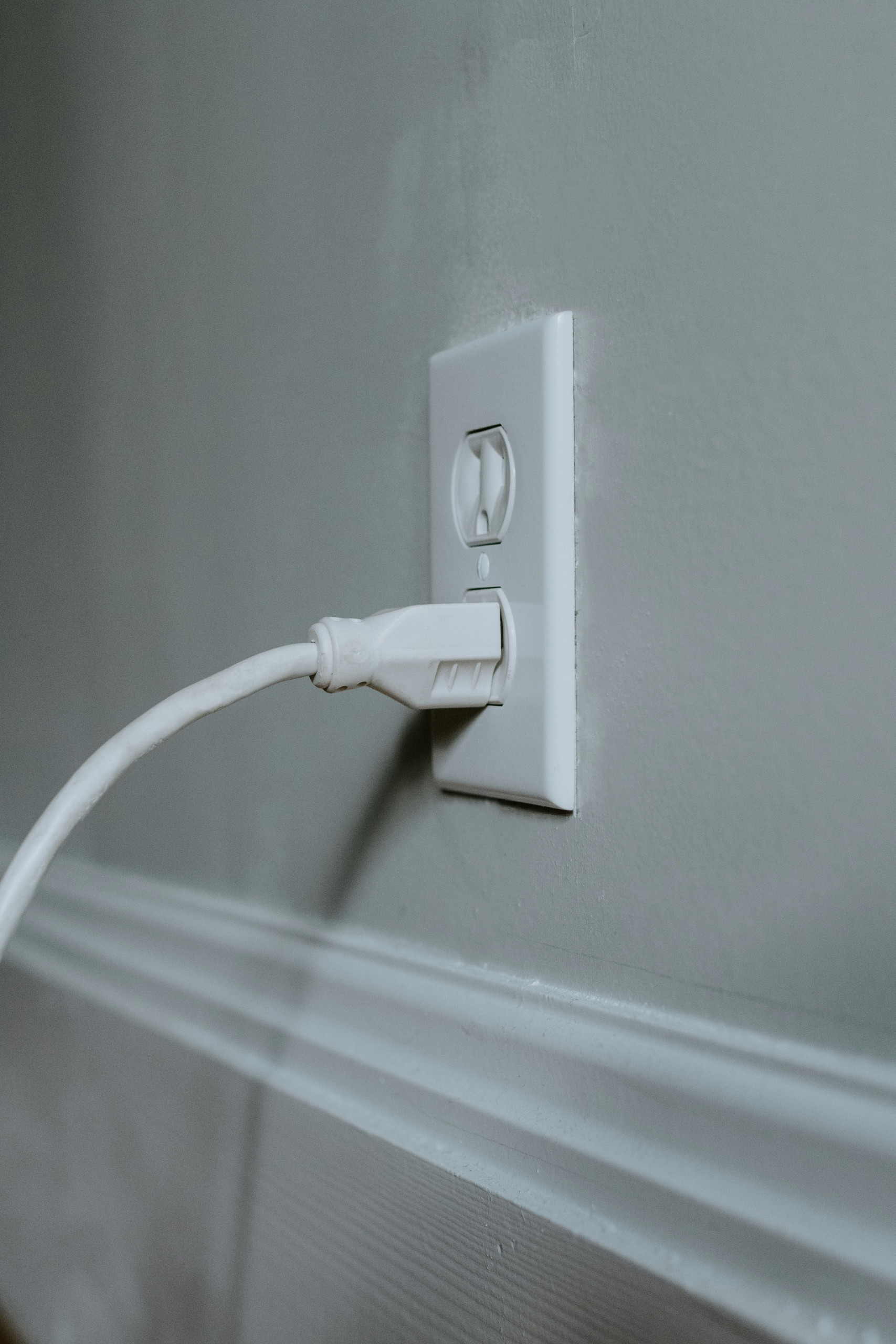Electric die grinders are versatile tools that make tasks like grinding, sanding, and polishing a breeze. However, even the best tools can sometimes encounter common issues that can hinder their performance. In this article, you will learn about troubleshooting these issues, providing you with the knowledge to keep your electric die grinder running smoothly and effectively. Whether it’s overheating, excessive vibration, or loss of power, we’ve got you covered with simple solutions to fix these problems. So, let’s roll up our sleeves and get ready to tackle these common hiccups that may arise with your electric die grinder.
Power Issues
Motor Not Starting
One of the most frustrating problems you may encounter with your electric die grinder is when the motor refuses to start. Before you start worrying about major repairs or replacements, there are a few simple troubleshooting steps you can take. First, check if the power supply is securely connected to the grinder. Sometimes, a loose connection can prevent the motor from starting. If the power supply is securely connected and the motor still won’t start, it might be worth inspecting the On/Off switch. Over time, the switch can become faulty or worn out, preventing it from engaging properly.
Weak Motor Performance
If you notice that your electric die grinder is not performing as powerfully as it used to, it might be due to a weak motor. This can happen if the motor is overloaded or if the carbon brushes inside the motor are worn out. Start by checking if the grinder is being used within its recommended capacity. If you are constantly pushing the grinder beyond its limits, it can lead to a decrease in motor performance. Additionally, the carbon brushes inside the motor can wear out over time, affecting the electrical connection and causing a weaker performance. Inspecting and replacing the carbon brushes, if necessary, can help restore the motor’s power.
Motor Overheating
Motor overheating is another common issue with electric die grinders. If you notice that the grinder becomes excessively hot during use, it’s important to address the problem to prevent any further damage. One of the first steps is to allow a cool-down period for the motor. Continuous operation without breaks can cause the motor to overheat. Additionally, check the air vents on the grinder for any blockages. Dust, debris, or other particles can accumulate over time, obstructing the airflow and causing the motor to overheat. Regularly cleaning the air vents can help prevent this issue.
Electrical Connection Problems
Loose Wiring
Electrical connection problems can be a major cause of frustration when using an electric die grinder. Loose wiring can disrupt the flow of electricity and prevent the grinder from functioning properly. If you suspect loose wiring, it’s important to turn off the grinder and unplug it before attempting any repairs. Inspect the wiring connections and ensure that they are securely fastened. Tightening any loose connections can help restore proper electrical flow and resolve the issue.
Faulty On/Off Switch
As mentioned earlier, a faulty On/Off switch can prevent the motor from starting. However, it can also cause electrical connection problems when the grinder is in use. If you find that the grinder intermittently loses power or experiences power surges, it’s worth examining the On/Off switch. Over time, the switch can wear out or develop internal faults, leading to these erratic electrical connections. Consider replacing the switch, if necessary, to ensure consistent and reliable power during operation.
Damaged Power Cord
Another potential electrical connection problem stems from a damaged power cord. The power cord is subjected to frequent movement and bending during use, making it susceptible to wear and tear. Inspect the power cord for any visible damage such as cuts, exposed wires, or fraying. These issues can lead to intermittent power loss or even electrical hazards. If you notice any damage to the power cord, it’s essential to replace it immediately to maintain a safe and reliable electrical connection.

Tool Operation Issues
Stuck or Jammed Grinding Wheel
Sometimes, the grinding wheel of your electric die grinder may get stuck or jammed, making it difficult to use the tool effectively. This can happen due to various reasons, such as debris buildup, improper wheel installation, or a damaged wheel. Firstly, check if there is any debris or material clogging the wheel. Clearing away any obstructions can help restore smooth grinding operation. If the wheel is properly installed and clear of debris, but still gets stuck, it might be worth considering replacing the wheel. A damaged wheel can interfere with the grinding process, leading to performance issues.
Excessive Vibration
Excessive vibration during the operation of an electric die grinder can be annoying and can also affect the quality and precision of your work. Several factors can contribute to excessive vibration, such as an unbalanced grinding wheel or loose components. Start by checking if the grinding wheel is properly balanced. An unbalanced wheel can cause the grinder to vibrate excessively. If the wheel is balanced, inspect other components of the tool, including the spindle and guard, to ensure they are securely fastened. Tightening any loose components can help minimize vibration and enhance your grinding experience.
Inconsistent Speed
Inconsistent speed can be a frustrating issue when using an electric die grinder, as it can affect the quality and accuracy of your work. If you notice that the grinder’s speed fluctuates or is not consistent, there are a few troubleshooting steps you can take. Firstly, check if the power supply is stable and providing a constant voltage. Uneven or fluctuating power can result in inconsistent speed. Additionally, inspect the speed control mechanism on the grinder. Over time, it can become worn out or dirty, affecting its ability to maintain a steady speed. Cleaning or replacing the speed control mechanism can help resolve this issue.
Excessive Noise or Strange Odors
Loud or Unusual Noise
Excessive noise during the operation of your electric die grinder can indicate a problem that needs attention. Grinding tools naturally produce some level of noise, but if you notice an increase in volume or unusual sounds, it’s important to investigate the issue. One possible cause can be a loose or misaligned grinding wheel. A loose wheel can create vibrations and produce excessive noise. Tightening or realigning the wheel can help reduce the noise. If the noise persists, it might be indicative of internal component wear or damage. In such cases, consulting a professional technician for further inspection and repair is recommended.
Burning or Foul Smell
If you detect a burning or foul smell emanating from your electric die grinder during use, it’s essential to address the issue promptly to prevent any potential hazards. A burning smell can indicate overheating or excessive friction within the tool. This can be caused by factors such as a malfunctioning motor, worn-out bearings, or a damaged grinding wheel. First, allow the grinder to cool down and ensure there are no blockages in the air vents. If the smell persists, it is advisable to have the tool inspected by a professional technician to identify and resolve the underlying problem.

Maintenance and Lubrication
Lack of Lubrication
Regular maintenance and lubrication of your electric die grinder are crucial to ensure its optimal performance and longevity. Lack of lubrication can lead to increased friction, heat buildup, and premature wear of internal components. Refer to the manufacturer’s guidelines on lubrication and apply the recommended lubricant to the appropriate areas, such as the bearings and gears. Periodically lubricating the grinder will help reduce friction, dissipate heat, and keep the tool operating smoothly.
Clogged Air Vents
The air vents on your electric die grinder allow for proper cooling of the motor during operation. Over time, these vents can become clogged with dust, debris, or grinding residue, obstructing the airflow and leading to motor overheating. Regularly inspect the air vents and use compressed air or a soft brush to remove any accumulated particles. Keeping the air vents clean will help maintain optimum airflow and prevent motor overheating.
Dirty or Worn-Out Grinding Wheel
The grinding wheel is the workhorse of an electric die grinder, and keeping it clean and in good condition is essential. Over time, the wheel can become dirty or worn out, affecting its performance and the quality of your grinding work. Cleaning the grinding wheel regularly with a wire brush or wheel cleaner can help remove built-up debris and maintain its sharpness. If the wheel becomes excessively worn or damaged, it’s important to replace it promptly with a new one to ensure optimal performance and safety.
Safety Concerns
Electric Shock Hazard
When working with any power tool, including electric die grinders, there is always a risk of electric shock if proper precautions are not taken. To minimize this hazard, ensure that the grinder is properly grounded and that the power supply is compatible with the tool’s requirements. Additionally, always use a grounded outlet and avoid using extension cords unless necessary and specifically designed for heavy-duty use. Regularly inspect the power cord for any signs of damage and ensure it is in good condition to prevent electrical accidents.
Protective Gear and Clothing
Personal safety should always be a priority when using an electric die grinder. Wear protective gear, including safety glasses or goggles, to protect your eyes from flying debris. Additionally, consider wearing ear protection to reduce the risk of hearing damage caused by the grinder’s noise. It is also advisable to wear gloves and a dust mask to protect your hands and respiratory system from potential hazards.
Proper Tool Handling
Proper tool handling is crucial to ensure both safety and optimal performance when using an electric die grinder. Always hold the grinder securely with both hands, maintaining a firm grip and control throughout operation. Avoid excessive force or pressure, as it can lead to increased vibration and performance issues. Additionally, never operate the grinder while distracted or under the influence of drugs or alcohol. Stay focused and attentive to prevent accidents and ensure precision in your work.

Troubleshooting Steps
Inspect the Power Supply
When troubleshooting any issues with your electric die grinder, it is essential to start by inspecting the power supply. Verify that the grinder is properly connected to a stable power source and that the voltage matches the tool’s requirements. Ensure that the power cord is not damaged and that the plug is securely inserted into the outlet. If the power supply is determined to be the cause of the problem, rectify the issue before further troubleshooting.
Check Electrical Connections
Another important troubleshooting step is to check all electrical connections within the grinder. Inspect the wiring connections, ensuring they are tight and secure. Examine the On/Off switch for any visible damage or signs of wear. If any loose connections or faulty components are identified, address them promptly. Proper electrical connections are crucial for the grinder to function effectively and safely.
Examine and Clean the Grinding Wheel
If you are experiencing tool operation issues, such as a stuck grinding wheel or excessive vibration, it is worthwhile to examine and clean the grinding wheel. Remove the wheel and inspect it for any signs of damage or obstructions. Clear away any debris or material buildup that may be causing the problem. Similarly, check the wheel’s balance and alignment, ensuring it is properly installed. Cleaning and maintaining the grinding wheel regularly will help minimize operational issues and ensure optimal performance.
Motor Not Starting
Check the Power Source
If your electric die grinder’s motor refuses to start, the first troubleshooting step is to check the power source. Verify that the grinder is properly connected to a functioning power outlet. If you are using an extension cord, ensure that it is in good condition and designed for the power requirements of the tool. Test the outlet using another device to confirm that it is providing power. If the power source is confirmed to be stable and the motor still doesn’t start, proceed to the next troubleshooting step.
Inspect the On/Off Switch
A faulty or worn-out On/Off switch can prevent the motor from starting. After ensuring the power source is adequate, inspect the switch for any visible damage or signs of wear. Toggle the switch on and off several times to see if it engages properly. If the switch appears to be the cause of the issue, consider replacing it with a new one. A functional On/Off switch is crucial for turning on the grinder’s motor and initiating the grinding process.
Weak Motor Performance
Check for Overload
Weak motor performance can occur if the grinder is consistently being used beyond its recommended capacity. Excessive force or overloading the tool can strain the motor and lead to decreased performance. Refer to the manufacturer’s guidelines on load capacity and ensure that you are operating within the specified limits. If you routinely work with heavy-duty materials or in demanding applications, consider investing in a more powerful electric die grinder to avoid compromising motor performance.
Inspect Carbon Brushes
The carbon brushes inside the motor play a vital role in conducting electricity and ensuring the motor’s efficiency. Over time, these brushes can wear out, resulting in weaker motor performance. To inspect the carbon brushes, refer to the grinder’s user manual for instructions on accessing and removing them. If the brushes appear worn or damaged, they should be replaced with new ones. Properly functioning brushes will improve the motor’s electrical connection and restore its performance.
Motor Overheating
Allow Cool-Down Period
Motor overheating can occur if the grinder is used continuously without breaks. To prevent damage to the motor, it’s important to allow for regular cool-down periods during extended use. If you notice that the grinder becomes excessively hot, turn it off and let it rest for a while. The cooling fan inside the grinder will help dissipate the heat. For heavy-duty or demanding applications, it may be necessary to use multiple grinders or rotate their usage to prevent prolonged overheating.
Check Air Vents for Blockage
The air vents on your electric die grinder are designed to facilitate proper air circulation and cooling. However, these vents can become clogged with dust, debris, or grinding residue, restricting the airflow and causing the motor to overheat. Regularly check the air vents and clean them using compressed air or a soft brush to remove any accumulated particles. Ensuring that the air vents are clear will promote efficient cooling and help prevent motor overheating.



